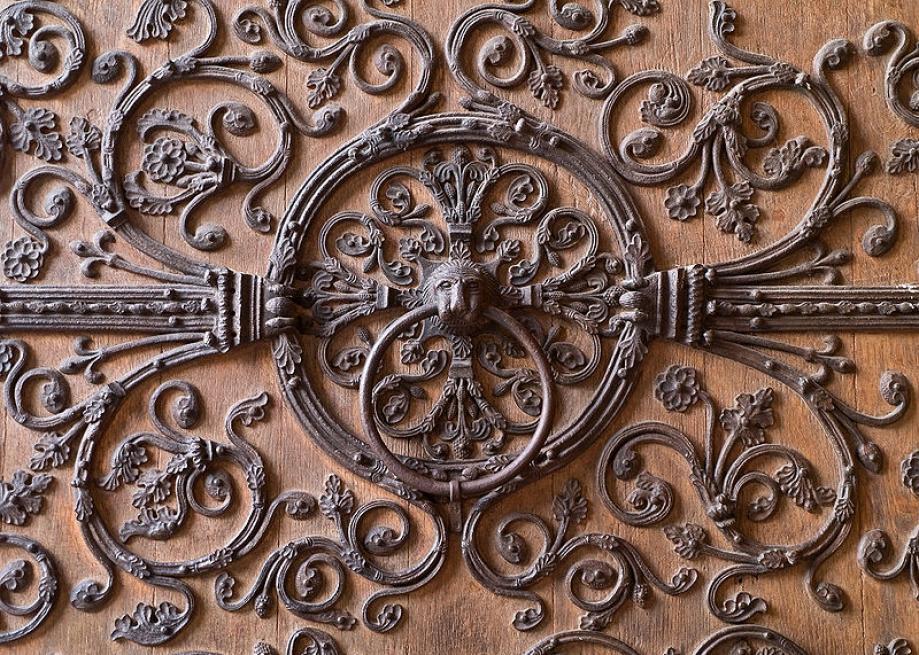Atlas Obscura on Slate is a blog about the world’s hidden wonders. Like us on Facebook and Tumblr, or follow us on Twitter.
So you are in 13th-century England and you’ve been accused of, or maybe have actually committed, a murder. To be taken into custody and tried would likely result in execution, so you need to go to ground, fast.
Luckily, all that entailed was running into a Christian church.
The right to sanctuary, as the tradition is called, is probably best known through the titular outcast of Victor Hugo’s The Hunchback of Notre Dame, who used the protective right to save his true love. But it actually dates all the way back to traditions from the ancient Greece and Rome, yet surprisingly survived (in a much changed form) into the 17th century.
Taking refuge in these miraculous safe zones, though, was far more complicated and dangerous than most people think.
The ancient Greeks and Romans had a similar concept of sanctuary from which the romanticized medieval laws grew. In Greek and Roman society, all temples to the gods could harbor runaway slaves and criminals to a certain extent. These early asylums were established under the belief that the gods (or god) were inviolable, and thus their temples and holy sites shared this untouchable aspect. Of course, these sites were not just hidey holes where fugitives could go to thumb their nose at the authorities; petitioners for sanctuary had to atone and pay penance for their crimes.
According to Karl Shoemaker, associate professor of history and law at the University of Wisconsin and author of Sanctuary and Crime in the Middle Ages, 400-1500, it was from these examples of holy forgiveness that the better-known version of medieval sanctuary sprung. The earliest Christians were aware that pagan temples offered sanctuary for criminals, and they did not want to be shown up in their piety by their pagan rivals. Thus, criminals could be offered protection within Christian churches as well, with the added benefit that asylum seekers might be converted or offered a chance to repent.

Photo: dun_deagh/Creative Commons
Shoemaker explains that as Christianity spread across Europe, sanctuary protections came along with it, supported by the church as well as the various crowns. Thanks to the precise and pervasive record-keeping of the English, their codified and standardized version of sanctuary procedure is the process best known today.
In order forasylum seekers to gain sanctuary, they had to simply enter a church and wait for an appointed officer of the crown (known as a coroner) to arrive. Once the coroner arrived, the seekers had to confess to their crime, whether they committed it or not, and they were then under the protection of the church. In some cases, more specific action was required, such as ringing a certain bell, sitting down on a special bench (known as a “frith-stool”), or wrapping their hand around a special door-knocker, as was the case at the Durham Cathedral, and giving it a rap, not unlike a historic, legal version of freeze tag.
During the existence of English sanctuary laws, which lasted until 1624, countless thousands of felons claimed sanctuary. Shoemaker claims that “in some counties as many as half of the recorded felonies would end in a sanctuary claim rather than a trial.” This could be even higher in some counties, where up to two-thirds of all the felonies were “resolved” in a sanctuary. During this period all Christian churches offered sanctuary within their walls. Certain churches also offered a widened area of protection that was extended to areas surrounding the church, demarcated by monuments known as “sanctuary stones” or “sanctuary crosses” Those churches (there were at least 22, including Westminster Abbey) that offered a wider sanctuary usually had to be approved by a charter from the king.
The vast majority of asylum seekers were fleeing from capital crimes such as murder and theft, which surprisingly often carried the death penalty in those days. Other offences, such as rape and arson, were also not unheard of.
Shoemaker walked us through a typical (and hypothetical) scenario:
Two guys are drinking in a tavern. They get a little too deep into their cups. Violence erupts. One of them pulls a knife. In the fight, he kills, whether on purpose or a little accidentally, the other guy. First thing he’s gonna do in that situation, if he’s in England any time between 1300 and the abolition of sanctuary in 1624, is run to the nearest church. He’ll enter the church and he’ll wait until [the coroner] arrives. When that man arrives, the fugitive will confess—he’ll say, “I killed so-and-so. I claim sanctuary.”
The coroner will write that down, and then at some point, months or perhaps even years later, when royal judges come into that vicinity to administer justice, that man’s crime, and his sanctuary claim, will be reported into the judicial record. Then the last thing that will happen is that the killer will what they call “abjure the realm”—that is, he will swear an oath to leave England and never return.

Photo: myrabella/Creative Commons
Once their sanctuary was resolved in this way, the fugitives would have to forfeit all of their possessions, money, and land to the crown, and get the hell out of Dodge, so to speak. The traditional custom was that the abjuring fugitive would dress in the clothes of a penitent (a simple tunic, no shoes, no hat), and head for the nearest port, where ship’s captains were required to take them on, and ferry them abroad, often to Ireland or France. Unfortunately, between the crusaders’ garb marking their status as a criminal, ensuring a less than friendly (if not outright hostile) journey out of the country, and their new, penniless life in a new country, leaving sanctuary was no free ride.
Through much of the existence of English sanctuary laws, fugitives would be given about 40 days to remain in the church, setting their affairs in order and generally preparing for their journey to exile. While they remained within the prescribed sanctuary grounds, their protection was sacrosanct. It was not unheard of for people to take justice into their own hands, although abusing or messing with fugitives in sanctuary held heavy penalties for the perpetrators.
As the centuries rolled on, the length of sanctuary afforded to fugitives began to increase, with many churches extending their fugitives indefinite stays. This form of sanctuary began looking pretty attractive to some criminals, who would flock to these church safehouses, essentially forming small dens of thieves under the protection of the church. Again from Shoemaker: “We have evidence of [the fugitives] are going out in marauding bands. Robbing shopkeepers, robbing others. Then retreating back to these sanctuaries.” This began to change the perception of church sanctuaries among the people of England, and was likely the death knell of English sanctuary law.
Shoemaker believes that the changing nature of the role of law during the late 16th century in English society was the ultimate downfall of church asylum. Previously, sanctuary was seen as an act of kindness, forgiveness, and piety on the part of both Christianity and the crown. But as the feeling that an effective criminal system would deter wrongdoing through punishment began to grow in the country, the view of sanctuary’s penitent treatment of fugitives seemed only to be rewarding the criminal acts by allowing asylum seekers to avoid the official penalty.
Slowly, sanctuary laws were rolled back. The eligible number of crimes were reduced. By 1624, standard sanctuary laws were abolished, and fugitives were no safer in a church than they were in the streets.
An earlier version of this article originally ran on Atlas Obscura.
More wonders to explore:
